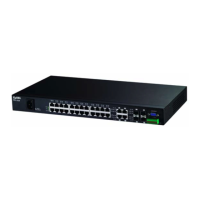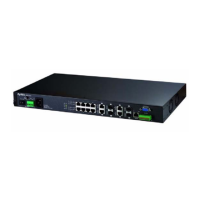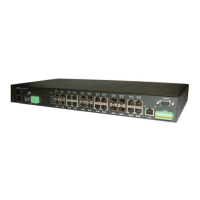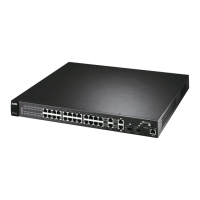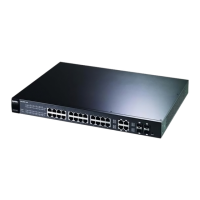Chapter 9 Subscriber Port Setup Screens
Management Switch Card User’s Guide
232
9.8.3 VDSL Port Setup Advanced: Custom RFI
Use this section of the screen to configure custom RFI settings.
Figure 143 VDSL Port Setup: Advanced (Custom RFI)
The following table describes the fields in this screen.
INM See Section 11.7.8 on page 355 for how to configure Impulse Noise Monitoring.
GINP See Section 11.7.7 on page 352 for how to configure ITU-T G.988.4’s improved impulse
noise protection.
SOS SOS Mode: use this to enable or disable the dynamic use of emergency rate reduction
during noise spikes.
See Section 11.7.2 on page 344 and Section 11.7.7 on page 352 for more on emergency
rate reduction and how to configure it.
Handshake Tx
PSD
See Section 9.8.7 on page 238 for how to configure custom handshake Tx PSD settings.
RFI Custom See Section 9.8.3 on page 232 for how to configure custom RFI settings.
Carrier Setup See Section Table 96 on page 216 for a similar description about how to mask carrier tones.
Table 100 VDSL Port Setup: Advanced
LABEL DESCRIPTION
Table 101 VDSL Port Setup: Advanced (Custom RFI)
LABEL DESCRIPTION
Index This field displays the index number.
Enable Select Enable to activate the RFI band.
Start Enter the start of the frequency range in kilohertz (kHz).
End Enter the end of the frequency range in kHz.
Mode Select how to apply the RFI band.
notch: this older method reduces the transmission power for the RFI band to -80 dBm/Hz.
gap: this newer method uses no transmission power for the RFI band.
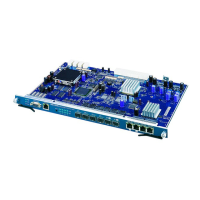
